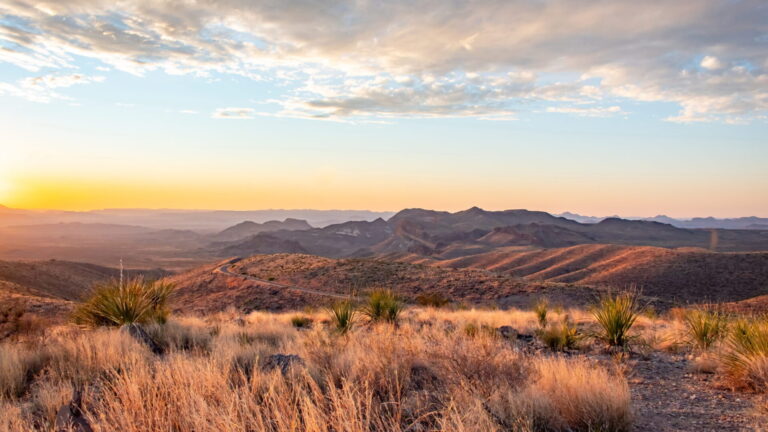Sustainable Development in Texas’ Unique Landscapes

When embarking on a development project in the vast range of Texas, it’s crucial to understand and navigate the unique challenges posed by the Lone Star State’s diverse landscapes and wildlife. From the intricacies of karst zones to the sensitive habitats of endangered species like the Golden-Cheeked Warbler, developers and environmental specialists must work hand in hand to ensure responsible and sustainable growth.
Embracing Sustainable Development
As Texas continues to experience growth and development, the need for sustainable practices becomes increasingly urgent. By incorporating environmental considerations from the initial site selection, through the project design and development to project completion, stakeholders can minimize their ecological footprint while fostering thriving communities.
Undertaking a development project in Texas demands a comprehensive understanding of the state’s diverse climatic, topographical and ecological regions. Responsible development involves not only meeting regulatory requirements but also fostering a stewardship mindset toward preserving the natural world. By prioritizing conservation and collaboration, we can pave the way for a future where development and environmental preservation are harmoniously integrated.
Preserving Cultural and Historical Heritage

Developers in Texas must also preserve the state’s rich cultural and historical heritage alongside environmental considerations. Texas is home to diverse indigenous communities and numerous historic landmarks, each with unique histories and cultural practices. Meaningful consultation with indigenous representatives ensures that development projects respect and honor ancestral lands and sacred sites, supporting mutual respect and collaboration.
Preserving historic landmarks, from Spanish missions to frontier forts, is essential. Developers must identify and protect these culturally significant sites, thoughtfully integrating them into development plans or mitigating their impact. Embracing adaptive reuse strategies for old buildings can transform them into vibrant cultural hubs while preserving historic architecture. Engaging the public through educational outreach and interpretation programs fosters appreciation for Texas’ diverse heritage, inspiring future generations to cherish and steward the state’s cultural legacy.
Site Selection Using GIS Technology
In addition to environmental and cultural considerations, site selection plays a crucial role in sustainable development in Texas. Geographic Information System (GIS) technology offers developers powerful tools for analyzing spatial data to identify suitable locations for projects while minimizing environmental impact.
By leveraging GIS technology, developers can assess various factors such as terrain characteristics, proximity to sensitive ecosystems, and existing infrastructure. This data-driven approach allows for informed decision-making and helps mitigate potential risks associated with development. Furthermore, GIS enables developers to overlay environmental, cultural, and socioeconomic datasets to identify areas of overlap and potential conflicts. By integrating these diverse datasets, developers can identify sites that offer both economic opportunities and environmental sustainability.
Karst Zones: Exploring Subterranean Landscapes

For many, the term “karst zone” may evoke images of mysterious caves and hidden underground formations. While partially correct, what exactly defines a karst zone, and why are they significant?
Karst zone formations are created through the dissolution of soluble bedrock, such as limestone or dolomite, resulting in distinctive features like caves, sinkholes, and disappearing streams. In Texas alone, there are over 15,000 documented caves, sinkholes, and springs, with karst aquifers serving as vital sources of groundwater for millions of residents. These subterranean environments are not only geologically fascinating but also ecologically rich, providing habitats for a diverse array of species, including some that are federally endangered.
Navigating Karst Challenges
Environmental specialists play a pivotal role in assessing and mitigating the impact of development on karst ecosystems. Their multifaceted work encompasses a blend of geologic and biological investigations, ranging from pinpointing karst recharge features that could jeopardize groundwater quality to meticulously surveying caves and cavities for the presence of endangered species.
Through their expertise, they strive to strike a delicate balance between human development and the preservation of fragile ecological systems, ensuring the long-term health and sustainability of Texas’ natural environment.
Protecting the Golden-Cheeked Warbler

In addition to the complexities of karst formations, developers must remain vigilant in safeguarding endangered species such as the Golden-Cheeked Warbler. This migratory songbird, native to the Central Texas Hill Country, depends on specific habitats for breeding and nesting, leaving it exceptionally vulnerable to habitat loss and fragmentation.
With the U.S. Fish and Wildlife Service designating the Golden-Cheeked Warbler as endangered, it’s imperative that developers act quickly to protect its habitats amidst development projects. These measures are not only crucial for the survival of the species but also essential for maintaining the delicate balance of Texas’ diverse ecosystem.
Collaboration for Conservation
Navigating the intricate regulatory landscape surrounding karst regions and protected species necessitates close collaboration among developers, environmental consultants, and regulatory agencies. This collaborative effort is essential for ensuring that development projects adhere to firm local, state and federal regulations aimed at preserving Texas’ natural heritage.
From conducting comprehensive assessments of potential impacts to implementing effective mitigation measures, every step must be taken to minimize harm to sensitive ecosystems and endangered species. By working together, stakeholders can navigate regulatory complexities with diligence and care, ultimately protecting the ecological integrity of Texas for generations to come.

